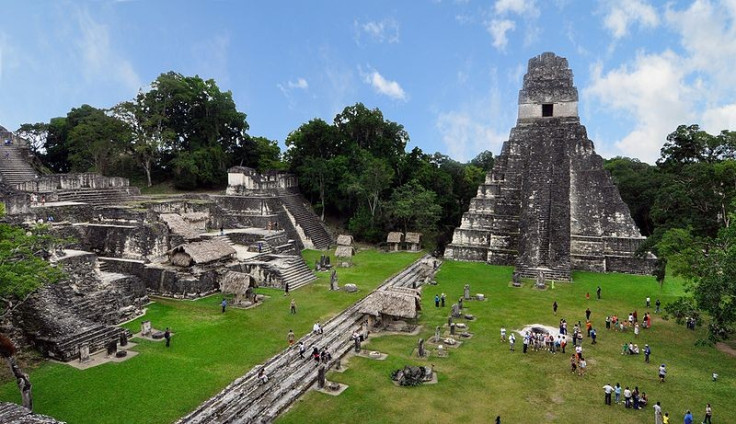Stunning discovery reveals lost Mayan megalopolis hidden beneath Guatemalan jungle
Research reveals sprawling system of interconnected ancient cities.

Researchers have uncovered a vast network of ancient Mayan ruins in northern Guatemala, including palaces, elevated highways and more than 60,000 houses, hidden for centuries beneath thick jungle.
The discovery - which has been described as a "revolution" in Mayan archaeology by the research team - reveals that a sprawling system of interconnected ancient cities was far more complex, and home to millions more people, than previously thought, National Geographic reports.
The evidence suggests that the region supported a civilization, which peaked 1,200 years ago, that was as sophisticated as any of the more well-known cultures in ancient Greece or China.
The structures in the El Peten region, which borders Mexico and Belize, were discovered using a ground-breaking aerial laser technique known as LiDAR (Light Detection and Ranging).
Aircraft fitted with the technology allowed archaeologists to 'see' hidden structures by digitally removing the tree canopy, enabling them to discover sites much faster than traditional methods.
The system works by producing 3D maps of the surface created using scanning laser pulses which are linked to a GPS system. The project, led by the Foundation for Maya Cultural and Natural Heritage, mapped more than 800 square miles of jungle.
The archaeologists discovered a spectacular array of infrastructure including urban centres, places of worship, fortifications, quarries and complex irrigation and terracing systems which would have supported intensive agriculture capable of feeding millions.
All the Mayan settlements were connected by wide causeways, built for heavy traffic, which were elevated to enable passage even during the rainy season. In addition, researchers found evidence of an advanced system of canals and reservoirs which enabled the Mayans to control the flow of water.
Despite never having draught animals to pull heavy loads for them, the Maya were "a civilization that was literally moving mountains," Marcello Canuto, an archaeologist from Tulane University who worked on the project, told National Geographic.
The interconnected network of ancient Maya cities was home to millions more people than previously thought https://t.co/0E0FafOyRR
— National Geographic (@NatGeo) February 1, 2018
"We've had this Western conceit that complex civilizations can't flourish in the tropics, that the tropics are where civilizations go to die. But with the new LiDAR-based evidence from Central America and [Cambodia's] Angkor Wat, we now have to consider that complex societies may have formed in the tropics and made their way outward from there," he said.
One of the most notable finds was a 30-metre-high pyramid at Tikal – a renowned archaeological site – which was previously thought to have been a natural hill.
The Maya were an advanced civilization who ruled over present-day southern Mexico, Guatemala, parts of Belize, El Salvador and Honduras. They were notable for their art, architecture, calendar and astronomical knowledge, their practice of human sacrifice and the creation of the only fully developed writing system in pre-Columbus America.
Their origins are shrouded in mystery but it is thought that Maya people began settling the Yucatan peninsula in modern-day Mexico between 2600 BC and 1800 BC. The golden age of Maya civilization was the so-called Classic period which stretched between 250 and 900 AD.
The new work has led researchers to propose a significantly higher estimate for the Maya population of between 10 and 15 million at its height. These people were spread over an area around twice the size of medieval England, albeit with a far higher population density.
Despite their significant achievements, during the 9<sup>th century the central Maya region suffered major political collapse, marking the beginning of centuries of decline. The final blow was dealt by the invading Spanish conquistadors, who stripped away most of the defining features of Maya civilization in the 16th and 17th centuries.
Many smaller settlements remained outside Spanish influence. The Mayan people, culture and language persist to this day across large swathes of Mesoamerica.





















